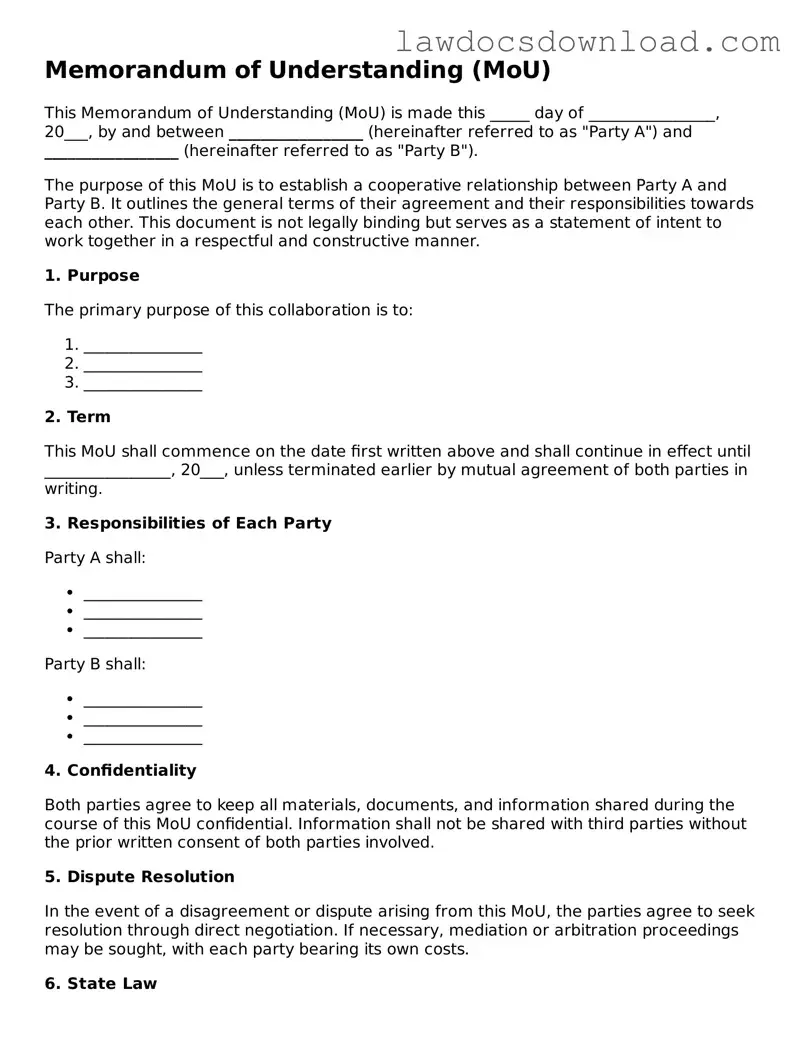Memorandum of Understanding (MoU)
This Memorandum of Understanding (MoU) is made this _____ day of ________________, 20___, by and between _________________ (hereinafter referred to as "Party A") and _________________ (hereinafter referred to as "Party B").
The purpose of this MoU is to establish a cooperative relationship between Party A and Party B. It outlines the general terms of their agreement and their responsibilities towards each other. This document is not legally binding but serves as a statement of intent to work together in a respectful and constructive manner.
1. Purpose
The primary purpose of this collaboration is to:
- _______________
- _______________
- _______________
2. Term
This MoU shall commence on the date first written above and shall continue in effect until ________________, 20___, unless terminated earlier by mutual agreement of both parties in writing.
3. Responsibilities of Each Party
Party A shall:
- _______________
- _______________
- _______________
Party B shall:
- _______________
- _______________
- _______________
4. Confidentiality
Both parties agree to keep all materials, documents, and information shared during the course of this MoU confidential. Information shall not be shared with third parties without the prior written consent of both parties involved.
5. Dispute Resolution
In the event of a disagreement or dispute arising from this MoU, the parties agree to seek resolution through direct negotiation. If necessary, mediation or arbitration proceedings may be sought, with each party bearing its own costs.
6. State Law
This MoU and the interpretation of its terms shall be governed by and construed in accordance with the laws of the State of _________________. Any legal actions or proceedings related to this MoU shall be exclusively subject to the jurisdiction of the courts within said state.
7. Amendment and Termination
This MoU may be amended or terminated by mutual written agreement of the parties. Any changes to this MoU must be in writing and signed by both parties.
8. Signatures
This MoU is executed by the duly authorized representatives of the parties as of the date first above written.
For Party A:
Signature: ___________________________________
Name: ________________________________________
Title: _______________________________________
Date: ________________________________________
For Party B:
Signature: ___________________________________
Name: ________________________________________
Title: _______________________________________
Date: ________________________________________
